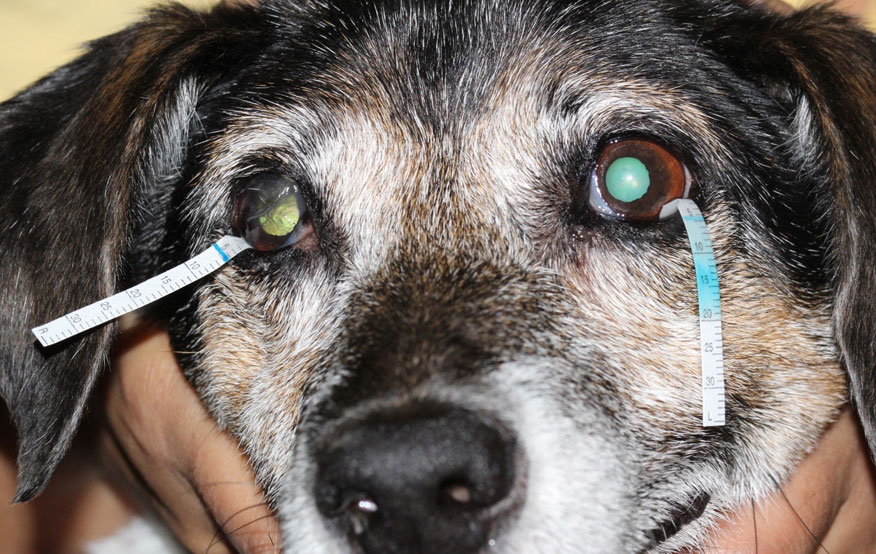Keratoconjuncitivitis sicca (dry eye)

Your dog has been diagnosed with 'dry eye'. This condition is secondary to a decrease in tear production (quantitative dry eye) or in tear quality (qualitative dry eye).
The tears are very important for the ocular health and for the normal function of the eye. Tears provide oxygen, nutrition, lubrication and part of the immune system to the corneal surface. The cornea (windscreen of the eye) is the part of the eye often most severely affected by dry eye. Furthermore, dry eye can cause discomfort if it is not controlled or treated.
Quantitative dry eye
Low tear production is the most common form of dry eye. It can be congenital (from birth) or acquired (from adulthood). Acquired dry eye is more common and is usually immune mediated. Certain dog breeds are predisposed to dry eye. The quantity of tears is measured using a Schirmer Tear Test strip. These are placed on the eye. Normal tear production in the dog is 15-25mm/min. Dry eye is usually treated with a combination of topical lubricants and tear stimulants drugs – cyclosporine, tacrolimus. These treatments are ongoing for the life of the dog. Certain complications – like secondary corneal ulcers or recurrent infections – may require antibiotic treatment.
Qualitative dry eye
This condition is less common and is harder to diagnose. Poor tear quality allows faster evaporation of the tear film and thus drying of the cornea. We treat this condition with topical lubricants containing liposomes and immune modifying drugs. Dry eye is often an ongoing condition requiring lifelong medication. Without adequate treatment the cornea is itchy and sore, predisposed to ulceration and infection. Dry eye is a very common condition in the dog but is usually very manageable allowing the dog to have healthy, visual and pain free eyes. However, if you are concerned about your dogs’ eyes do not hesitate to contact us.
Surgery for dry eye - Parotid Duct Transpostion (PDT)
- In cases that have failed to respond to medication we can do a PDT. In this surgery the duct of the parotid salivary gland is repositioned from the mouth to eye for lubrication.
- Saliva is less ideal than tears for the ocular surface and often carries some ongoing management requirements. For this reason, we will always to ménage any case of dry eye by other means before doing this surgery.
